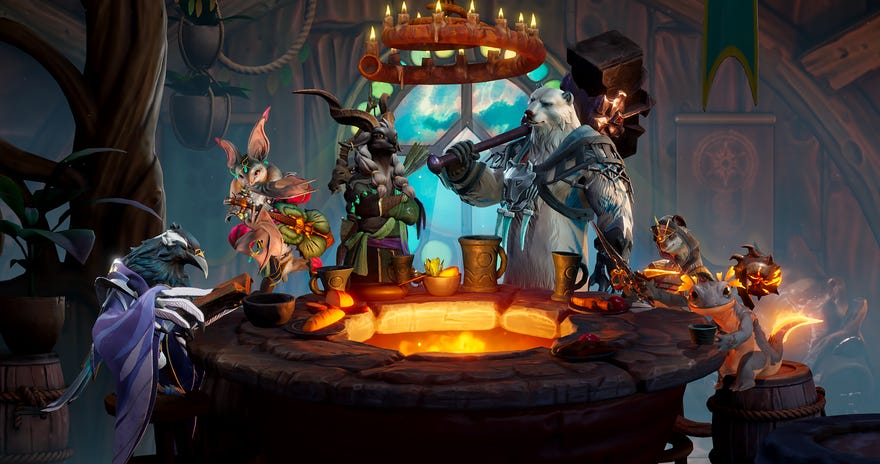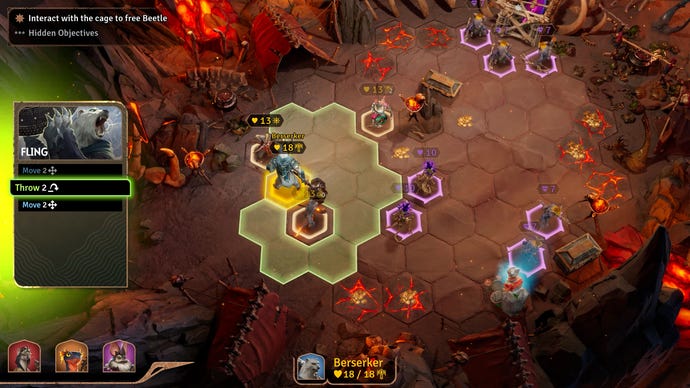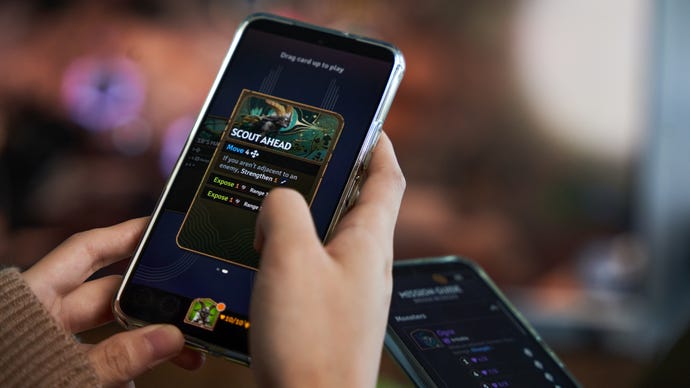HomeFeaturesSunderfolk
Sunderfolk is a gripping co-op strategy game from former Blizzard talent that wants to “bring back game night” - using your phoneJackbox meets Gloomhaven meets Xbox SmartGlass
Jackbox meets Gloomhaven meets Xbox SmartGlass
Image credit:Dreamhaven
Image credit:Dreamhaven

Sunderfolk | Gameplay TrailerWatch on YouTube
Sunderfolk | Gameplay Trailer

As for the missions themselves, the key thing to know is that Sunderfolk does a wonderful job of being a combat puzzler that often requires serious coordination to achieve objectives against superior enemy numbers, whilealsobeing a game where you can troll your pals a bit. Players and enemy movements are grouped into rounds. Within your round, it’s up to players to decide who goes next, and when I say “decide” I naturally mean “fight like alley cats for dominance, only for your infant niece to play a card ‘accidentally’ and ruin everything”. On a similar note, the player group can only perform one character’s ultimate ability per round, the basis for further raging quarrels as to whether my ultimate is more ultimate than yours.
The mission maps I played were all both digestibly screen-sized, and woven around simple but effective terrain or enemy variables that could be manipulated to either scientifically yank victory from the jaws of defeat, or shove your weasel assassin buddy further into them. That weasel has it coming. During one of our co-op preview bouts, the weasel player used a multi-strike ability to teleport around and land glancing hits on several giant spiders at once. When giant spiders in Sunderfolk are hit, they skitter away randomly to another hex. In this case, all the spiders ended up next to me.
Image credit:Dreamhaven

Image credit:Dreamhaven

The smartphone interface reminds me of forgotten “auxiliary screen” devices and software such as Wii U and Xbox SmartGlass, but when I spoke to him after the hands-on, Secret Door’s boss Chris Sigaty said he “hadn’t really thought about” these hoary old parallels. Sunderfolk takes more inspiration from smartphone party game platform Jackbox, and exploits how fluent people now are with touchscreens at large. “We use these devices to do these sorts of things - scrolling, reading information, typing in information constantly,” Sigaty commented. “So we’re all very well educated in this already.” Game director Erin Marek, meanwhile, cited the influence of Apple’s TV remote apps for iPad and iPhone.
Gloomhaven, Xbox SmartGlass and all the rest of my incoherent referencing aside, Sunderfolk could pass for one of Blizzard’s creations. The art is redolent of Warcraft andHearthstone- stylised and storybook but with just enough heft and teeth and shadow that it doesn’t feel outright cartoonish. Dreamhaven’s marketing department have emphasised the comparison, but Sigaty resisted it. “People say ‘it’s Blizzard 2.0’ and it’s like, no, it’s completely something new,” he told me. “I think we can’t help but be built on values and insights from that time, right? We learned certain lessons - some of them that I’m not very good at even articulating, but feelings about how you interact with the community, and how you form a community, and what you want to pay attention to in the quality level of the game.”
Sigaty traced a little of Sunderfolk’s spirit to his time at Blizzcon, “where you’re watching the best players in the world eat and play, and for me, I would feel chills being in the audience watching that level of skill”. But he added that Sunderfolk was conceived after he and the studio’s former Blizzard staff had left. “I think a game like this couldn’t have been made probably at Blizzard - I didn’t pitch this game or anything there. They have needs that have to meet the equivalent ofWorld of Warcraft.”